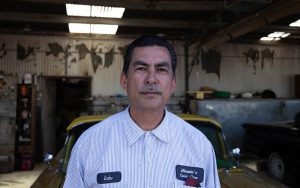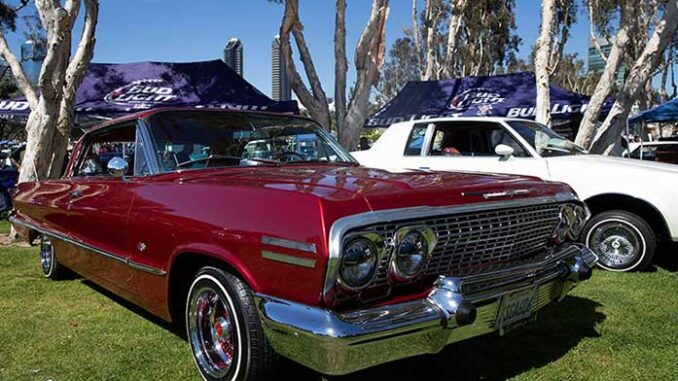
SAN DIEGO – The American Southwest is known for the meshing, coalescing and fusing of many cultures. Here, custom and tradition “no son ni de aqui ni de alla” (Spanish for “are neither here nor there”).
Nowhere is this better represented than in the lowrider culture, where lowering an automobile elevates its prestige and helps families bond over shared values and traditions.
Richard Ochoa, president of Society Car Club in Mesa and owner of Motorsport Showcase, an exhibition company, said lowriders are more popular than ever.
“This has happened because of the internet,” he said. “There’s mechanisms in place that let people who haven’t seen (the style) to participate.”
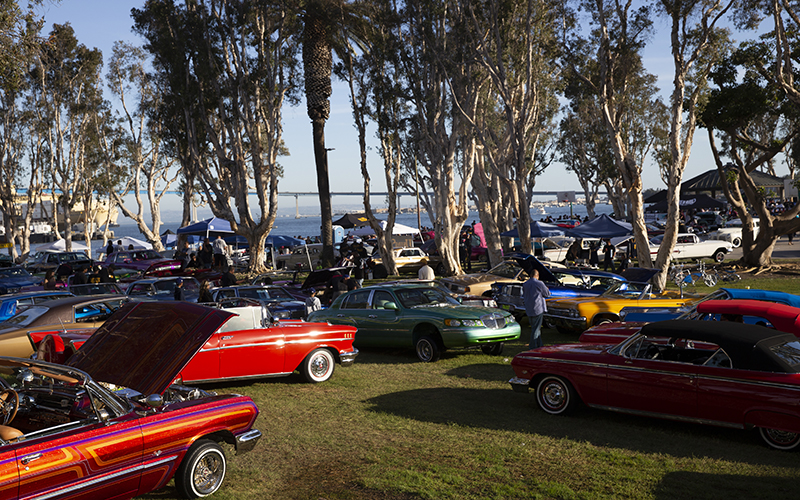
The Day at the Bay car show in San Diego speaks to Ochoa’s point. The show has been growing steadily since its inception in 2011, said its coordinator, Jose “Pelon” Alvarado.
“Last year we had about 5,400 spectators,” he said. “This year, we had close to 7,500 in total.”
This year’s Day at the Bay drew 1,200 motorcycles and vehicles – a 33 percent increase from last year’s 900.
From Mesa to the coast
Ochoa founded Society Car Club in 1980. This year, 18 members made the trip for the San Diego show.
One of the 18 was Manny Sandoval, who wanted to showcase the family principles that Society prides itself in. The car Sandoval exhibited at this year’s event formerly belonged to his brother-in-law, whose death inspired the vehicle’s design.
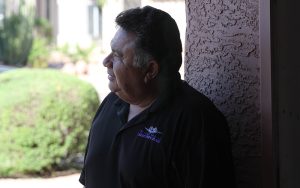
“The car was made for him … he was my friend from childhood and we were passionate about lowriders,” Sandoval said. “We grew up around lowriders and always talked about his dreams and what he wanted to do to them.”
Seventy-six car clubs from Arizona, California and New Mexico participated in Day at the Bay, with the first two states being the most represented.
Latin Bombas of Imperial Valley, California, was among them.
“What we like is getting together with our families, our wives, our children and grandchildren. This is a family club,” Bombas member Manuel Molina said.
For Molina, taking part in the customs and traditions of lowrider culture goes far beyond customizing a slab of steel on wheels.
“It all comes together,” he said. “The way we dress, the way we talk … this is our culture, and that’s what we all represent.”
Society Car Club, Latin Bombas and other collectives help dispel the at-times negative perception of lowrider culture, Molina said.
“Everyone thinks we’re nothing but gang members, but if you actually look at what we invest … that’s not true. We work, we provide for our families … and that’s what our culture is founded upon,” he said. “Time changes things, and we keep working to change that negative perception that people have of us.”
Molina is referring to the strong cultural links between lowriding and the pachucos, a subculture that started among young people of Mexican descent in the twin cities of El Paso and Ciudad Juarez, Mexico, in the 1930s and ’40s. Pachucos were known for their exaggerated zoot suits and flamboyant, sometimes rowdy, behavior.
Mexican-American youth saw the pachucos as a revolt against white society’s attempts to erase their Mexican roots, Ochoa said. However, much of white society associated the subculture with gang violence, crime and drug use.
Therefore, the pachucos identity focused on contradicting the cultural norms imposed by Anglo society. This is where the stylistic rebelliousness that shows in their clothing and demeanor was born.
It was not until the culture reached Los Angeles that the practice of lowering a car as close to the pavement as possible was developed in the mid-1940s.
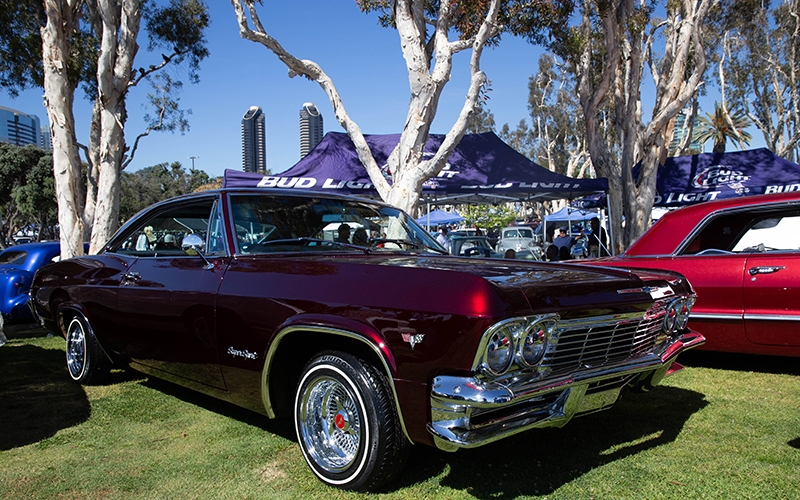
The lowrider style is defined by its colorful paint schemes, elaborate graphics and undersize wheels on older, bigger cars – often Chevrolet Impalas, Oldsmobile Cutlasses and Buick Regals. Many incorporate designs that are rooted in Mexican culture, including Mayan and Aztec symbolism.To get them low, the cars are equipped with powerful hydraulic systems that often allow owners to jack up the front, the back and either side – then drop the whole thing back to an inch of the blacktop.

